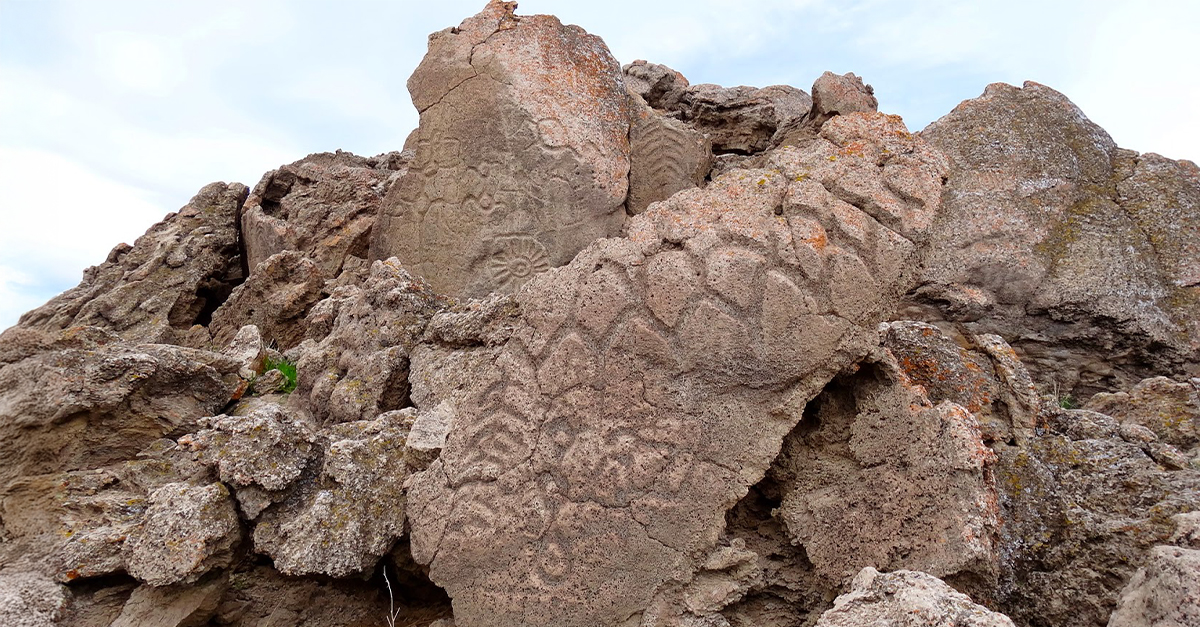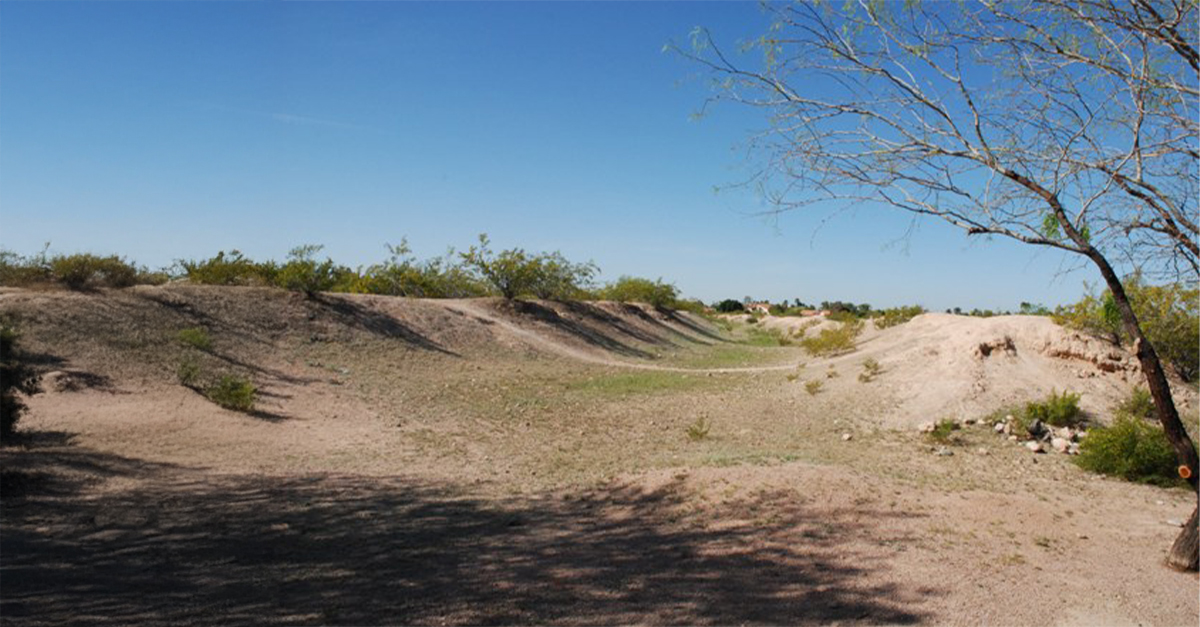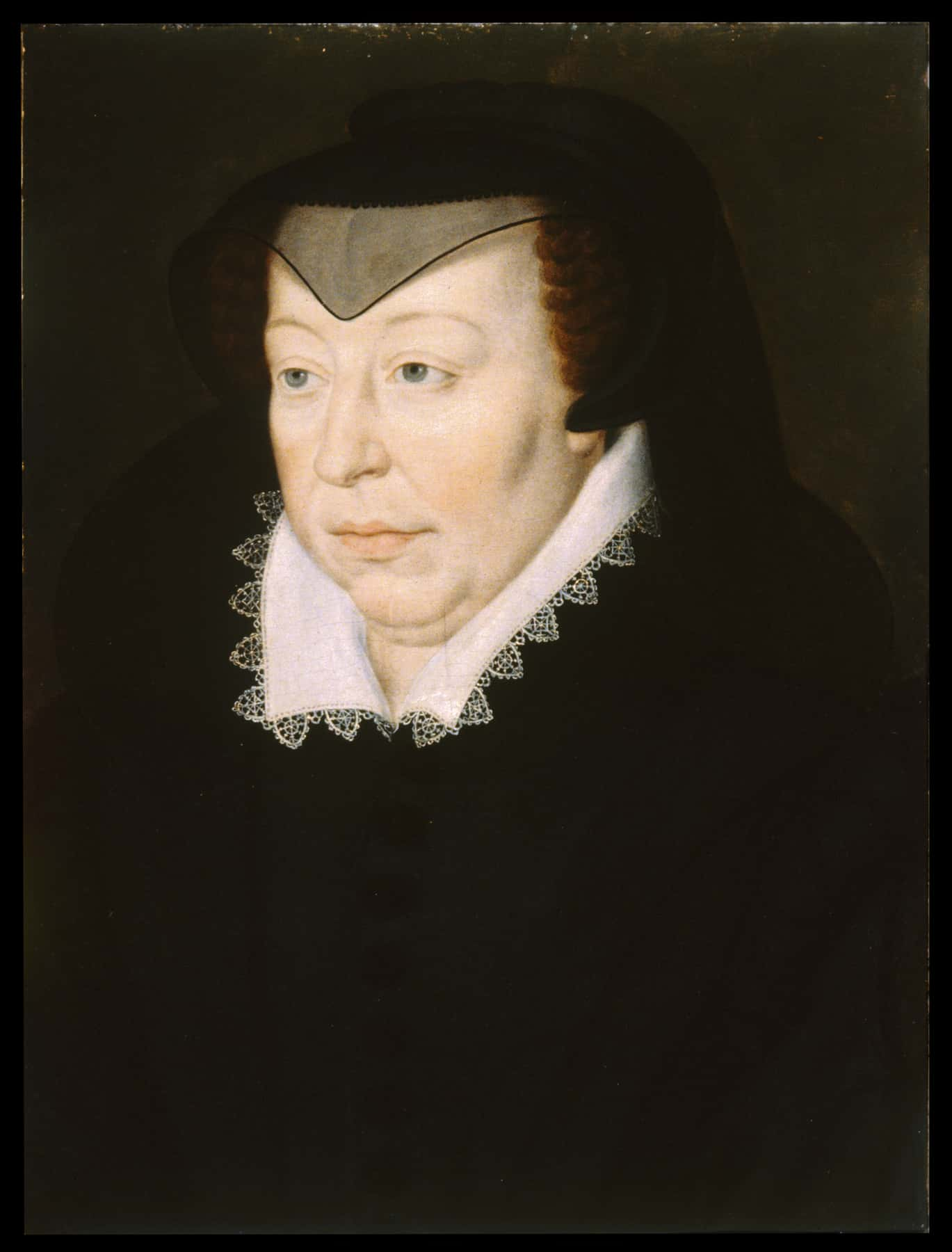In the parched desert landscape of Nevada, near the now-dry Lake Winnemucca, lies one of the oldest and most mysterious forms of human expression in North America. Petroglyphs etched into the rock face thousands of years ago reveal an ancient culture’s presence—and possibly its beliefs, rituals, and understanding of the world long before written history.
Etched In Stone For Millennia
These petroglyphs, carved into the limestone boulders of the Winnemucca Lake area, are believed to be between 10,000 and 14,000 years old. Their remarkable age makes them older than the pyramids of Egypt and Stonehenge. The patterns and designs have withstood millennia of environmental change, testifying to their creators’ deep connection to the land.
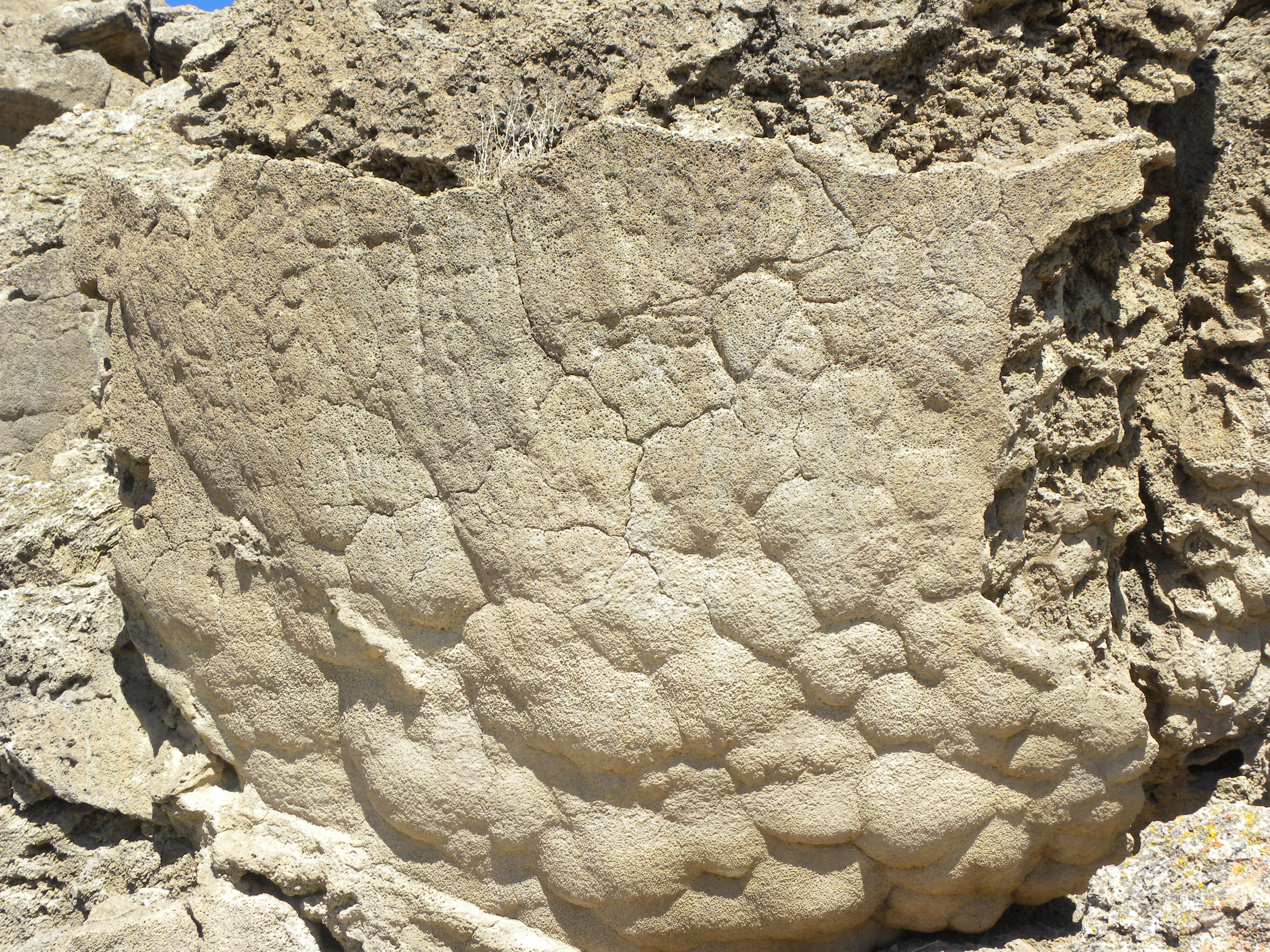 Larry V. Benson, USGS, Wikimedia Commons
Larry V. Benson, USGS, Wikimedia Commons
Mysterious Circles And Lines
The petroglyphs consist of geometric shapes, including deeply carved concentric circles, zigzags, and wavy lines. Unlike pictographs that use paint, these were etched directly into the rock using stone tools. Their abstract nature is open to interpretation, but researchers believe the carvings may have had spiritual, astronomical, or symbolic significance to the people who created them.
Dating The Undateable
Since rock carvings can't be directly carbon-dated, scientists used a method known as rock varnish dating. This technique analyzes the buildup of manganese and iron oxide on the petroglyphs compared to untouched rock surfaces nearby. This allows archaeologists to estimate the carvings’ age with greater accuracy.
A Changing Landscape
At the time the carvings were made, Lake Winnemucca was a large active body of water, part of a much wetter and greener environment than today. The people living nearby would've relied on the lake for food, water, and transportation. As the climate changed and the lake dried up, the region became increasingly inhospitable.
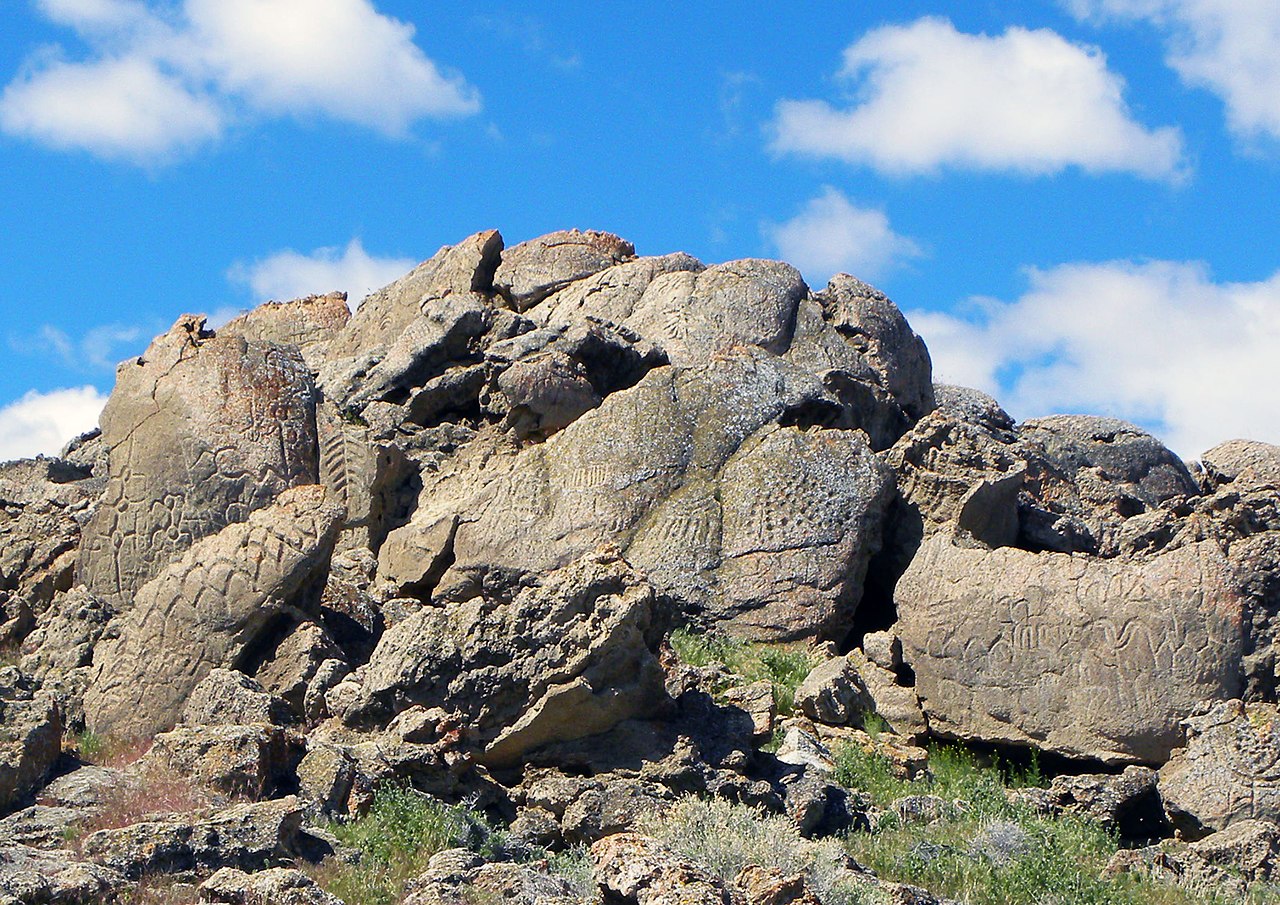 Larry V. Benson, USGS, Wkimedia Commons
Larry V. Benson, USGS, Wkimedia Commons
Who Were The Carvers?
The identity of the petroglyphs' creators remains uncertain, but researchers believe they were early ancestors of the Paiute people. These prehistoric communities thrived in the Great Basin region for thousands of years. The petroglyphs may have served as markers for seasonal migration, spiritual gatherings, or even storytelling through symbolic images.
A Sacred And Protected Site
The petroglyph site is now protected by the Bureau of Land Management and recognized for its cultural and archaeological importance. Local Indigenous communities, including modern Paiute tribes, regard the area as sacred. For them, the carvings aren't just artifacts, but a living part of their ancestral heritage that speak to their identity and traditions.
Scientific Collaboration With Indigenous Voices
Recent studies have featured collaboration with Native American communities to better understand the carvings’ meaning. Tribal historians and elders have been invited to participate in interpretation efforts. This inclusive approach honors both scientific inquiry and Indigenous knowledge, adding color to the story these carvings tell.
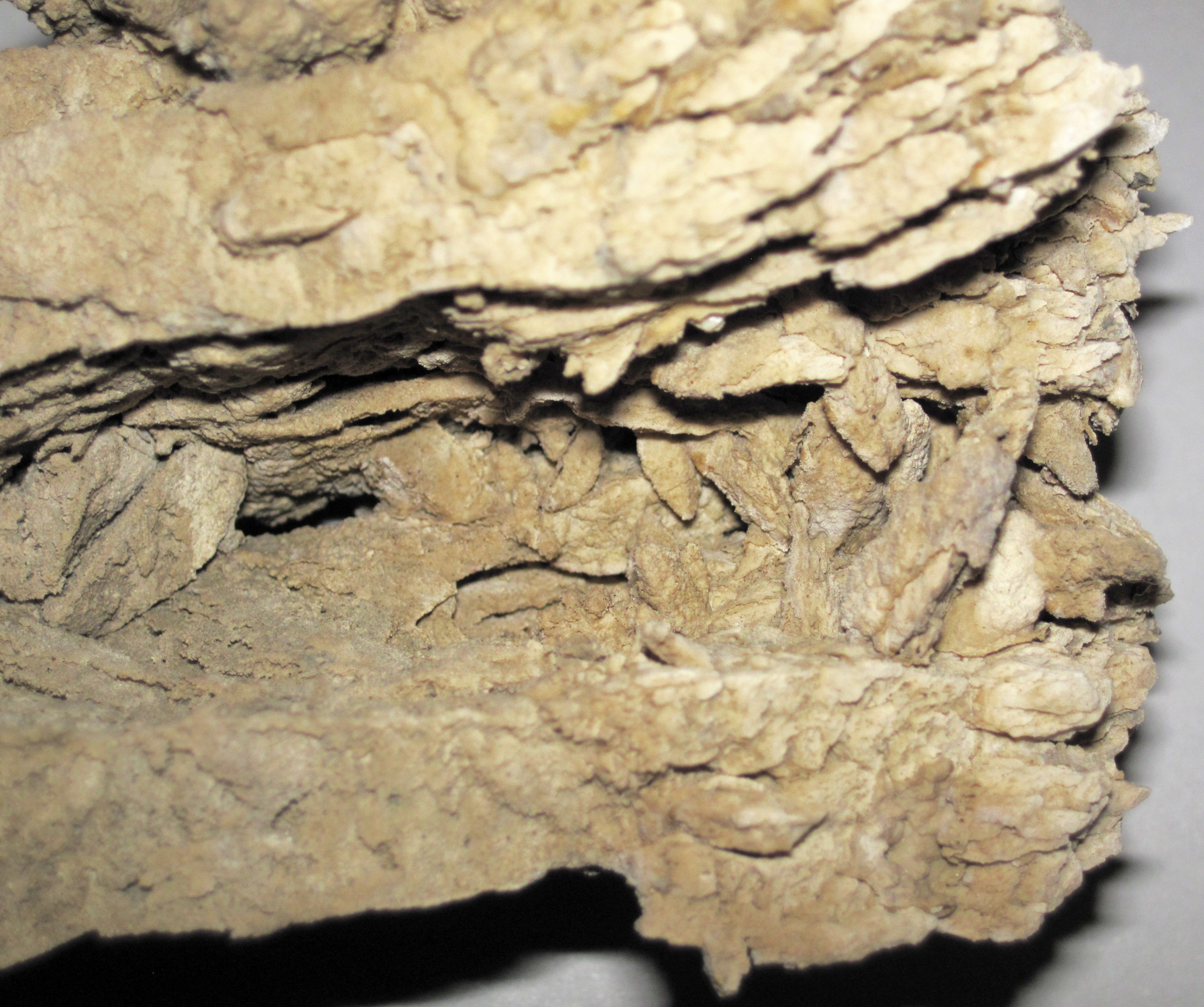 James St. John, Wikimedia Commons
James St. John, Wikimedia Commons
Preservation Amid Harsh Elements
Despite the harsh desert conditions, the petroglyphs have held up remarkably well. However, erosion, vandalism, and increasing foot traffic pose threats to their preservation. There's an ongoing effort to balance public access with conservation, using digital documentation and 3D scanning to archive the carvings in their current state for future study and education.
Windows Into A Lost World
The petroglyphs near Lake Winnemucca are no mere ancient graffiti scribblings. They are true representations of the thoughts and lives of people living through a time of environmental upheaval. Each carved line is a window into a society with no metal tools, cities, or written language, but rich in ancient wisdom.

History's most fascinating stories and darkest secrets, delivered to your inbox daily.
Archaeology Meets Modern Technology
Technology has enhanced our ability to study the site without damaging it. High-resolution imaging, satellite data, and 3D modeling allow researchers to examine the petroglyphs in painstaking detail. These tools also make it easier to share the site with the public in virtual formats, reducing the impact of physical tourism on the fragile rock surfaces.
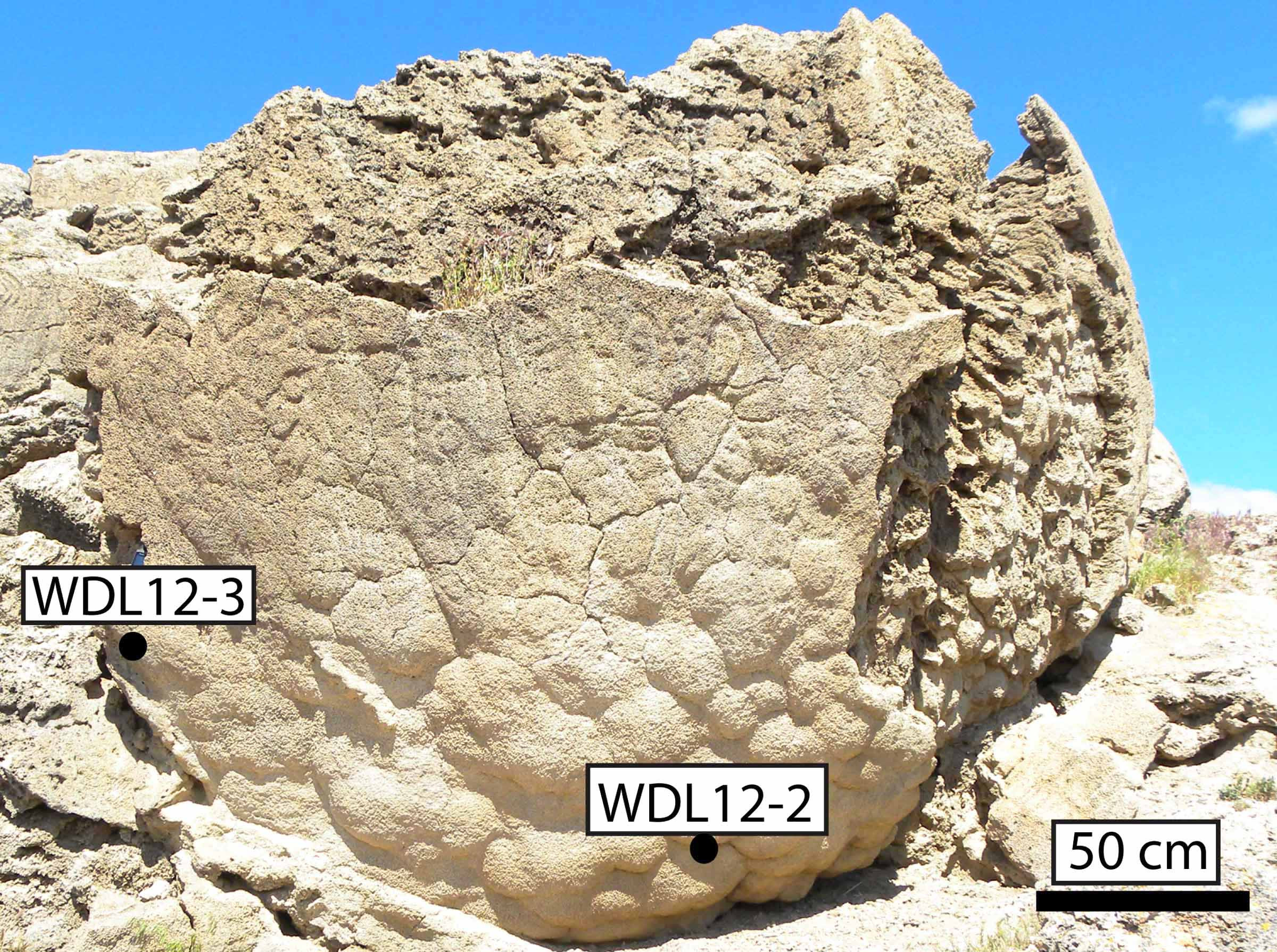 Larry V. Benson, USGS, Wikimedia Commons
Larry V. Benson, USGS, Wikimedia Commons
Legacy In Stone
As one of the oldest known examples of rock art in North America, the Lake Winnemucca petroglyphs are incredible proof of how long people have been living and roaming this continent. It's part of the enduring legacy of the First Peoples of the Americas and their ability to leave a mark that transcends time.
Etched Into The Sands Of Time
The petroglyphs etched near Lake Winnemucca are older than most other monuments on Planet Earth. They challenge us to imagine what life was like 10,000 years ago, leaving no doubt that even in a vast desert, the voices of the past are still with us, hewn into the stone, waiting to be understood and preserved for generations to come.
You May Also Like:

